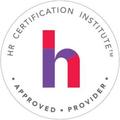Critical roles are high-impact jobs that contribute value to stakeholders and are difficult to fill with available talent in the market. Identifying those roles provides the organization with critical information needed to analyze and forecast best allocation of scarce resources. How do organizations go about this process, especially as AI and technology change what work looks like and how it’s structured?
Members shared their processes, ongoing changes, and lessons learned in identifying critical roles (now and future) for their organizations. The meeting explored i4cp’s 7-Step Strategic Workforce Planning Process (opens in a new tab)
and dives into step two of that model: talent segmentation.
|
|
|
Segment Your Critical and Pivotal Roles with Talent Mapping
|
|
|
|
The goal of segmenting the workforce is about understanding the "critical" talent segments for business success. We discussed critical vs pivotal roles: how we identify them, what makes a critical role in organizations, and how they're changing.
|
|
|
|
Critical roles are those that are:
- essential for meeting both short-term and long-term business objectives. This means that the role is integral to the core operations and strategic goals of the company, ensuring its ongoing success and competitiveness. And,
- difficult to fill due to the specialized skills required and the scarcity of qualified candidates in the market.
Pivotal roles are positions that, while not necessarily difficult to fill, have a significant and disproportionate impact on an organization's performance and customer satisfaction.
|
|

The X-axis represents the ease of filling the role, while the Y-axis indicates the role's core importance to business objectives. Roles that are both difficult to fill and crucial to business success fall into the top-right quadrant, identified as "mission critical" roles. These roles are essential for driving the organization's strategic goals and are hard to replace due to their specialized skill sets and market scarcity.
Conversely, roles in the bottom-left quadrant are neither critical to business success nor hard to find in the market, often referred to as non-essential or easily outsourced roles. The top-left quadrant includes roles that are crucial for business success but relatively easier to fill. The bottom-right quadrant represents roles that are challenging to fill but not central to the core business strategy. This framework aids organizations in prioritizing their workforce planning efforts by focusing resources on securing and retaining mission-critical roles while optimizing or outsourcing non-essential functions.
|
|
|
|
Special guest: Tracy Larson,
Leadership Effectiveness HR COE Consultant, Dow
|
|
|
|
|
|
Tracy shared the importance of retention in talent management, particularly through the use of stay interviews and ongoing conversations between leaders and employees. She emphasized understanding employees' intentions and satisfaction levels can help preempt potential attrition. She also spoke about the need for succession planning, not only for high-level executives but also for all key roles within the organization.
|
|
|
|
Tracy's presentation sparked a rich discussion around the role of retention in talent management - and assessing whether impact of a loss is critical, moderate, or minor, and how to feed these insights into critical role audits. These insights are help in formulating retention strategies. But it is important - as Mary Nuss reminded us, to keep in mind it's the role we should be looking at, not the person. Some employees may be difficult to replace because of their attitude, institutional knowledge, network, or the fact that they do the work of two people.
|
|
|
|
"We have to remember it isn't the person, it's the role."
- Mary Nuss, HR Systems Senior Manager
GE Appliances
|
|
|
|
The Effect of Data and AI on Critical Role Identification
|
|
|
|
Historically there hasn't been much data available, and what there has been hasn't been very accessible.Workforce Planning practitioners are using a wide range of data sources to inform talent planning. These include:
- i4cp Research
- Burning Glass Institute
- Total Neuron
- LinkedIn Insights
- Government Reports
|
|
|
|
"I think technology will help a lot. We can do a lot more." - Kate Zimberg, SVP Human Resources, F5
|
|
|
|
We concluded with a discussion on the evolving nature of critical roles with advancements in AI. As AI continues to impact job functions, organizations will need to adapt by identifying new critical roles and updating their workforce strategies accordingly.
|
|
|
| |
|
Take the Next Step in Your Workforce Planning
|
|
|
This meeting is exclusively for members of the Workforce Planning Exchange.
If you'd like to participate, please contact us to see if you qualify.
If you are an i4cp member, please log in to access the registration/meeting details.
log in
This event is approved for certification credits.












